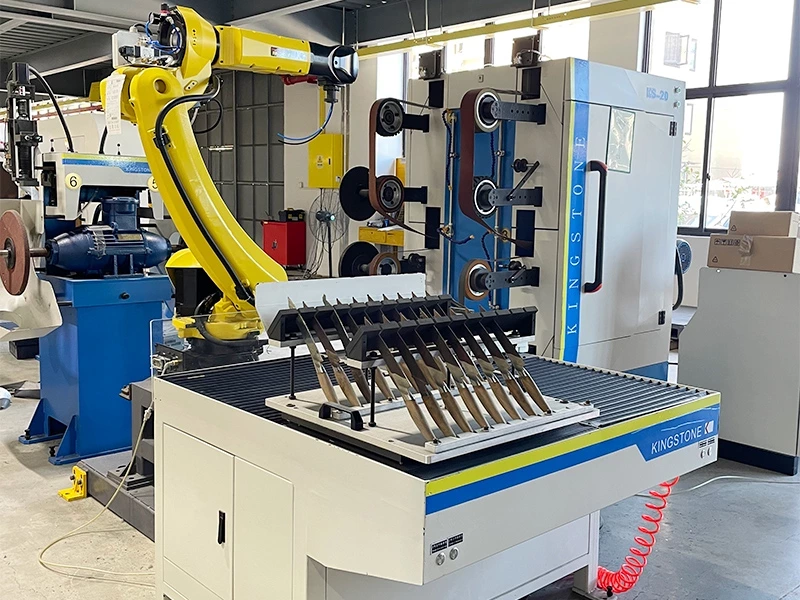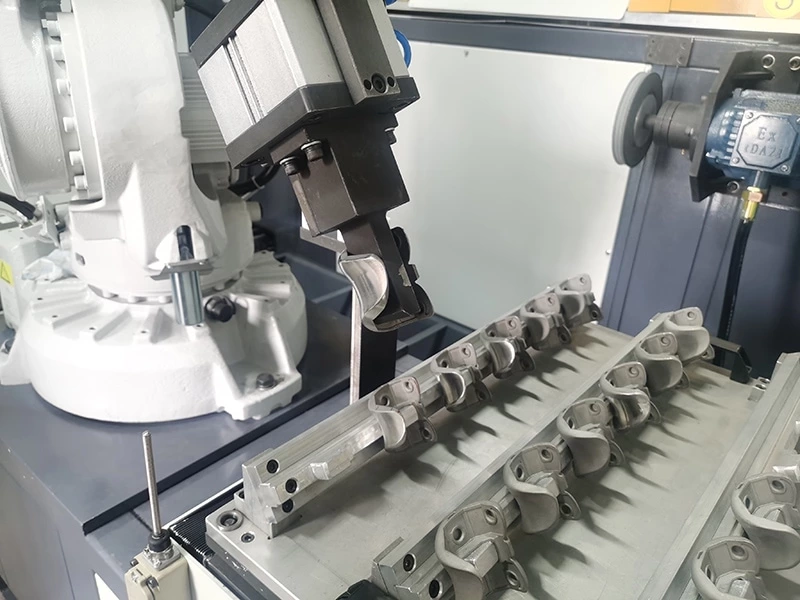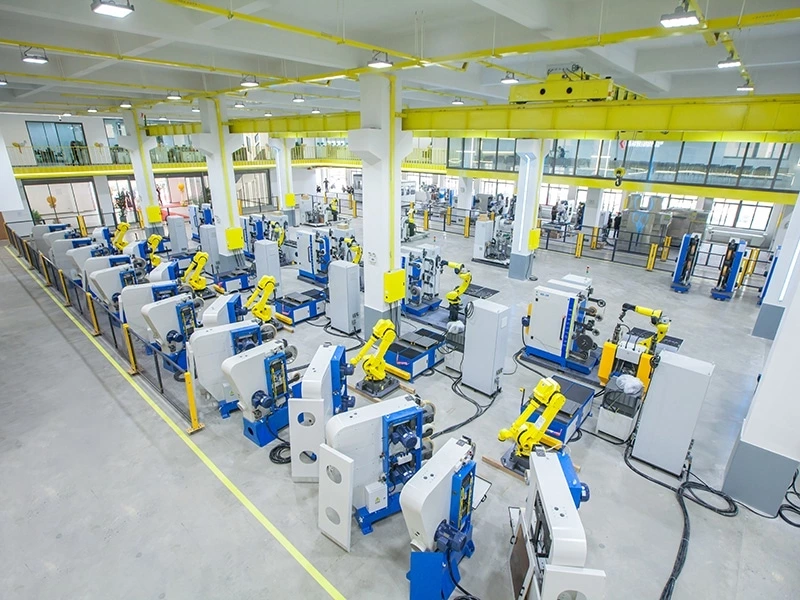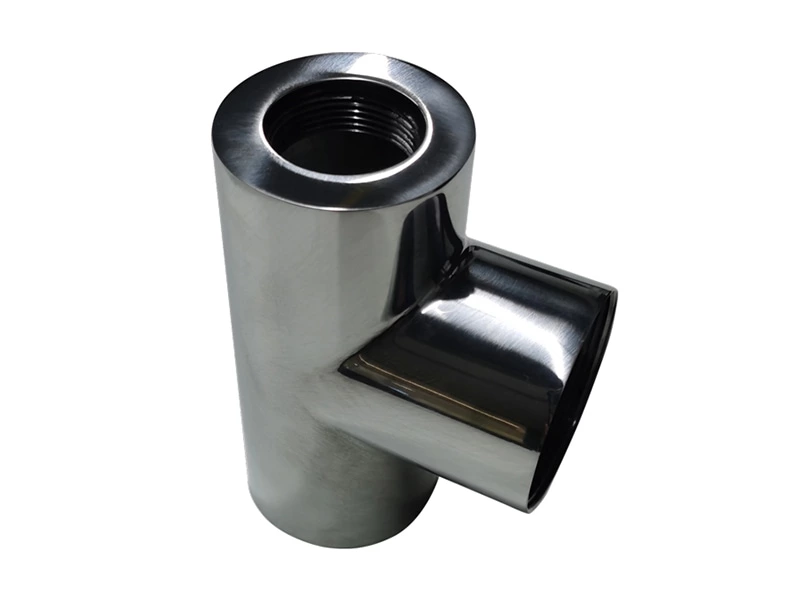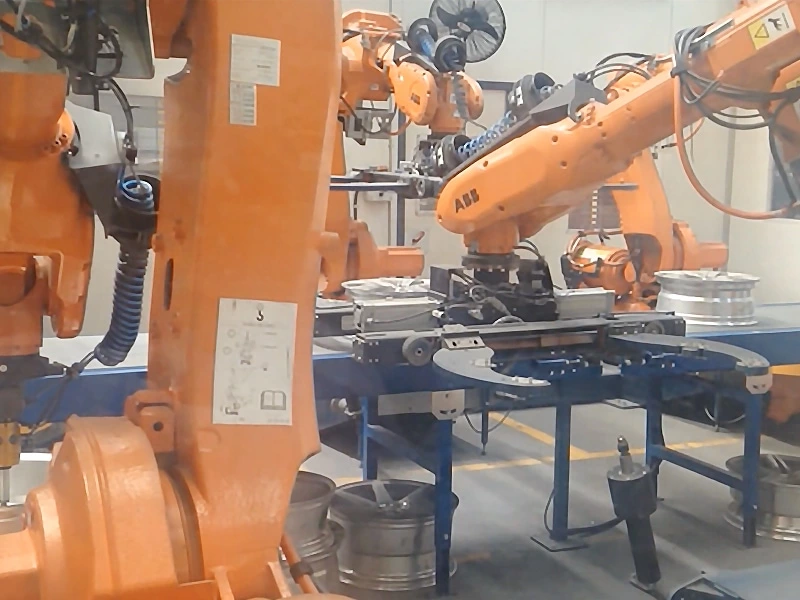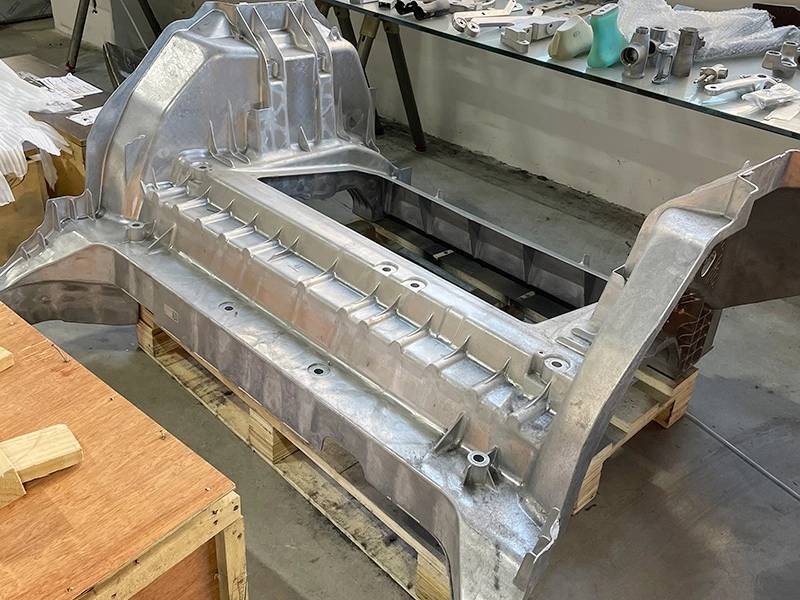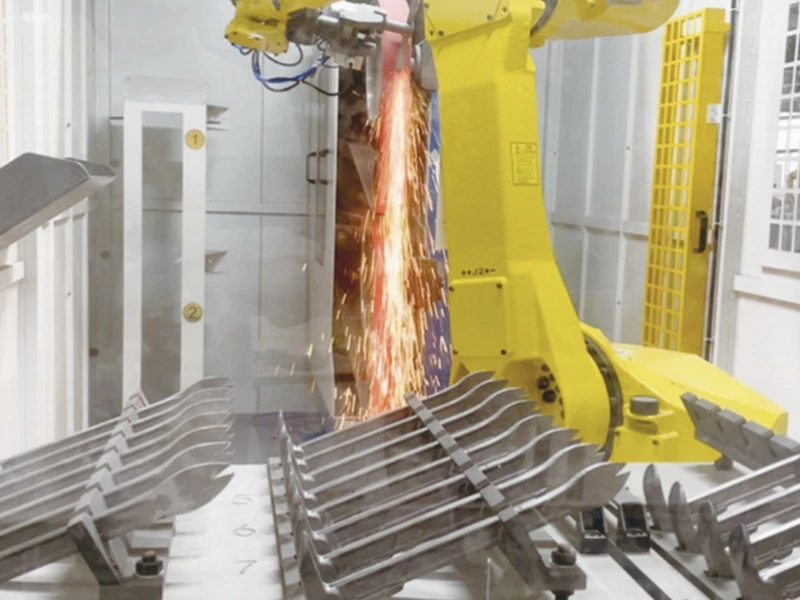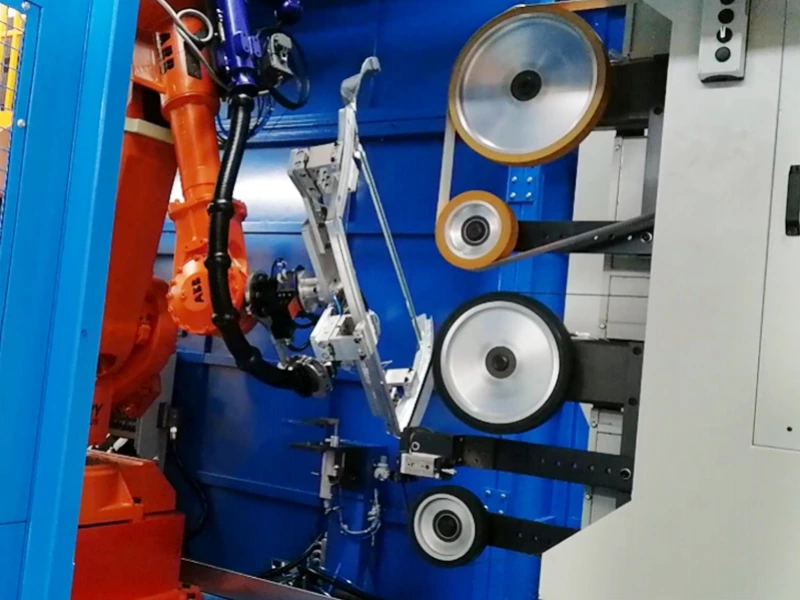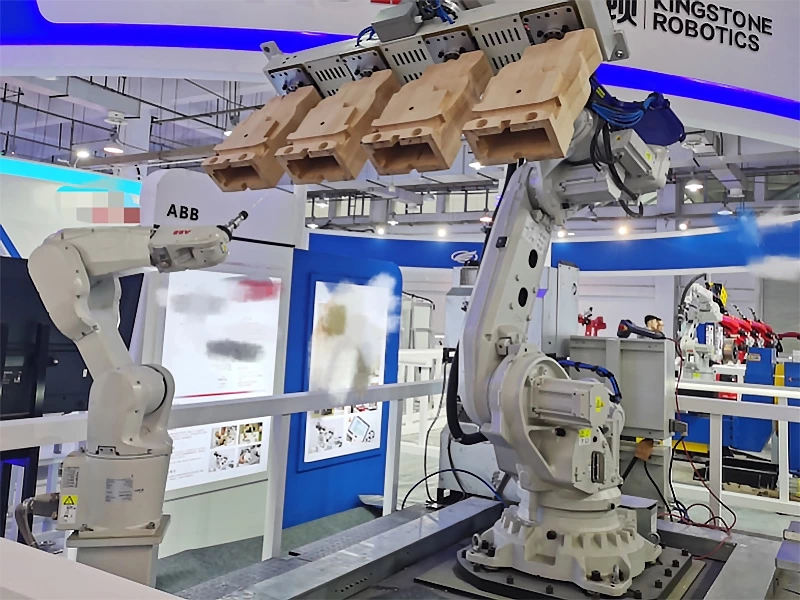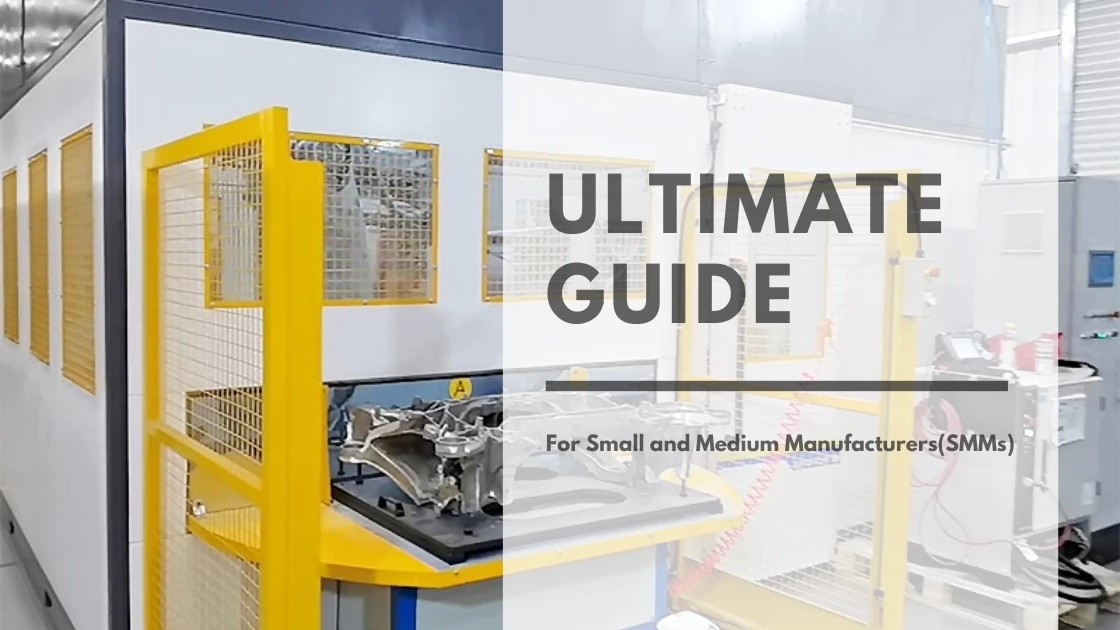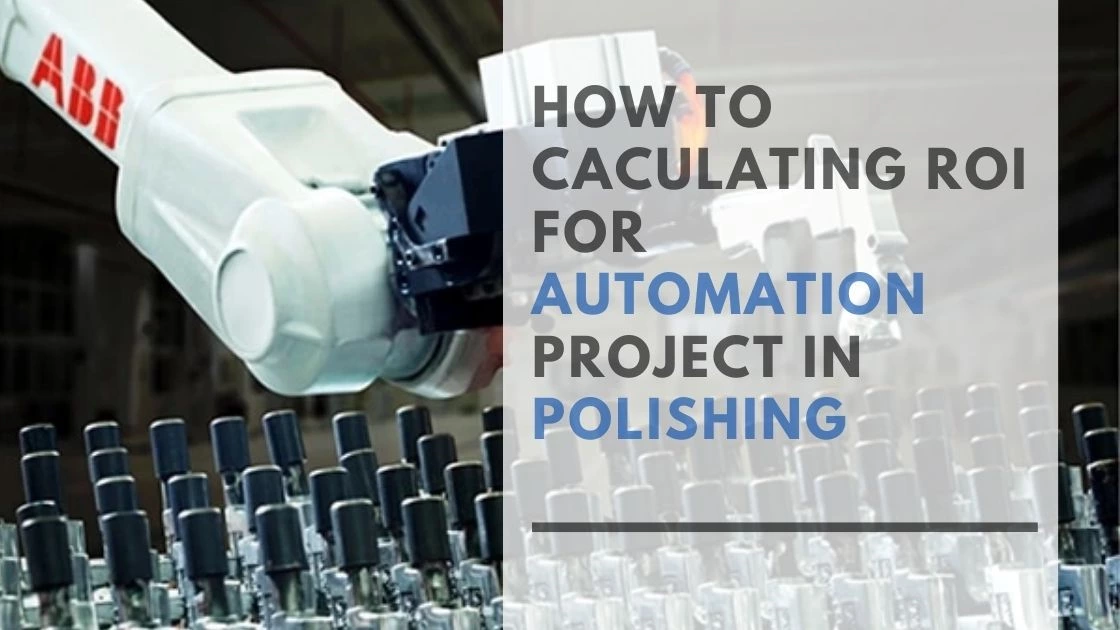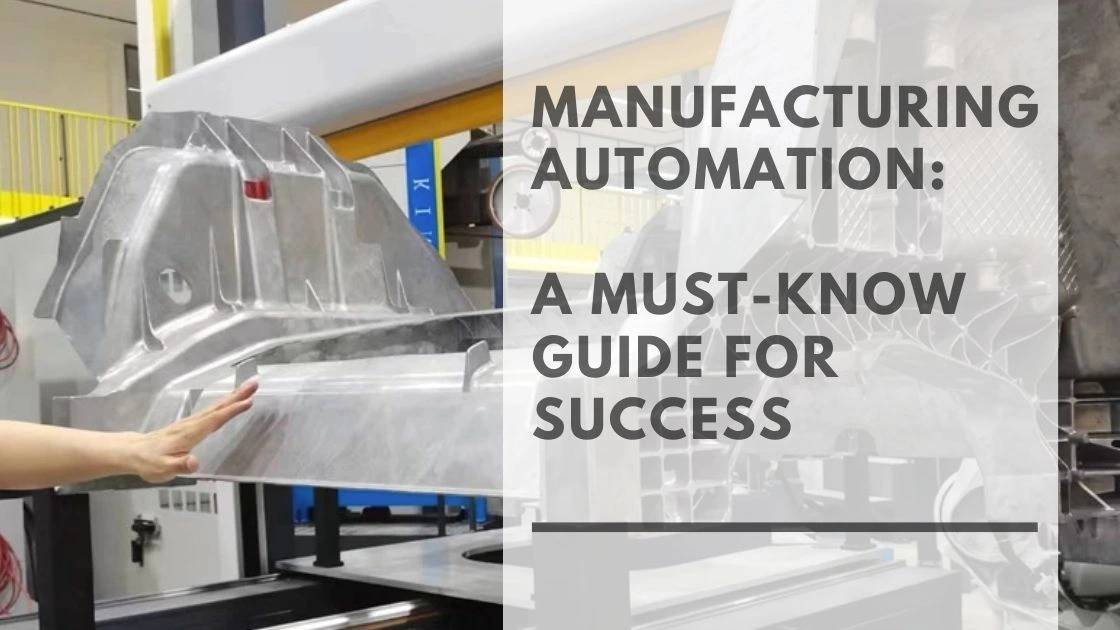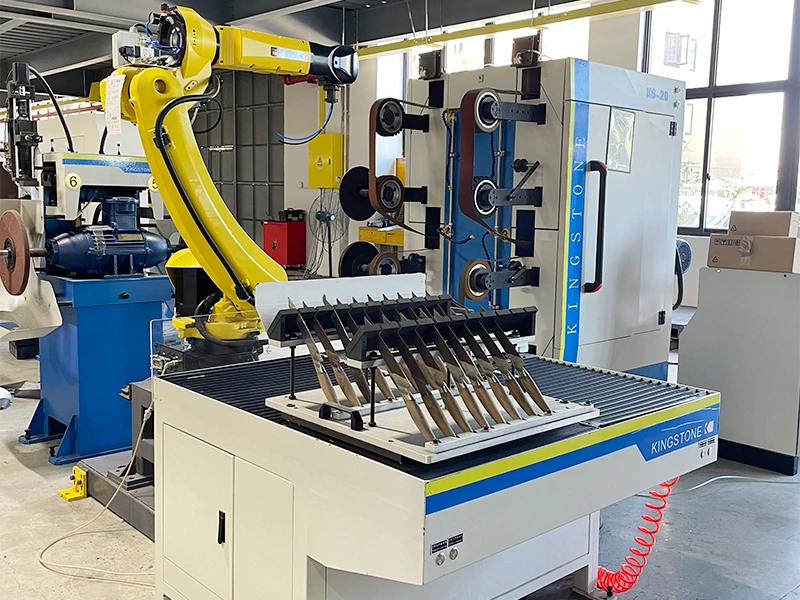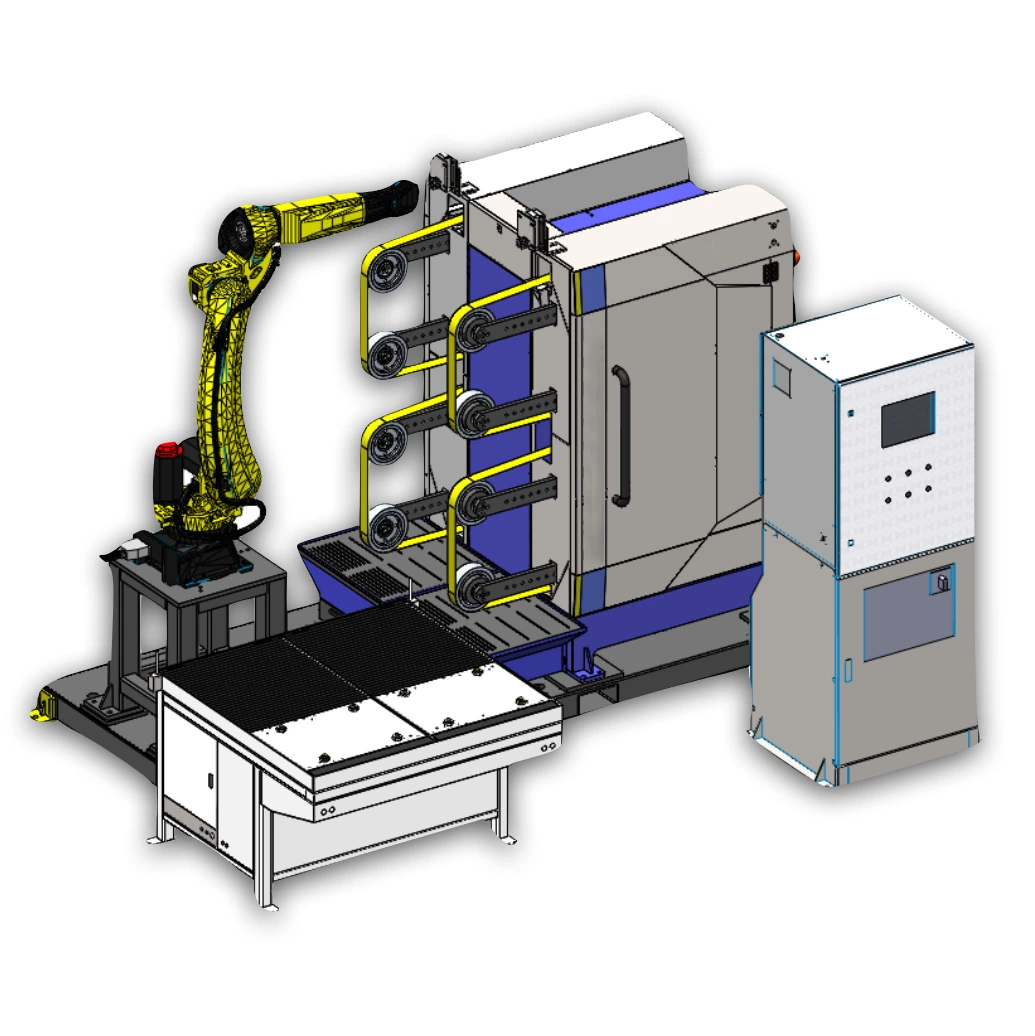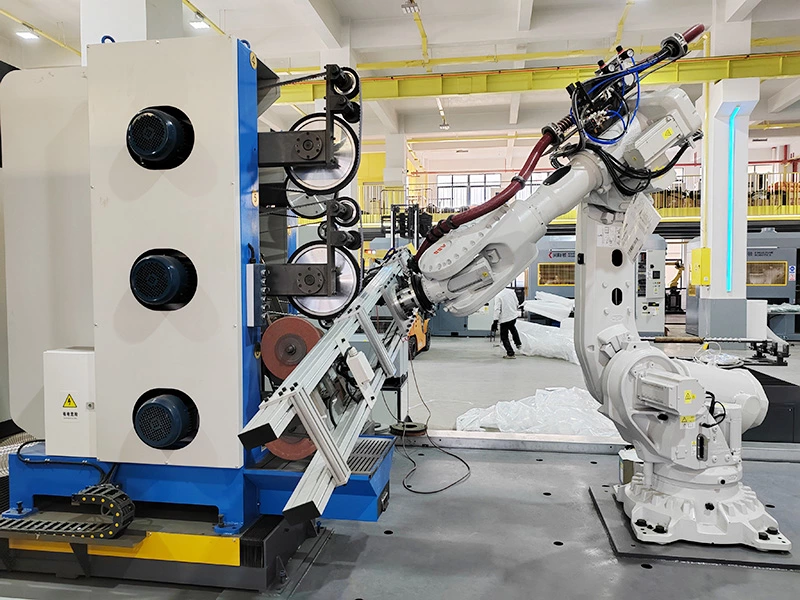Manufacturing Automation: A Must-Know Guide for Success
For many years, manufacturing automation was seen as an optional enhancement—something that could improve productivity, efficiency, and quality but wasn’t essential for profitability. While automated systems offered advantages like cost reduction and streamlined production, many manufacturers operated successfully without them.
However, the industry has undergone a fundamental transformation. In today’s fast-paced and highly competitive market, automation is no longer a luxury—it’s a necessity. Rising labor shortages, increasing demand for product consistency, and pressure to optimize costs have made automation an integral part of modern manufacturing. Companies that fail to adopt automated solutions risk falling behind in efficiency, scalability, and overall competitiveness.
The good news is that advancements in automation technology have made it more accessible than ever. Innovations in robotics, AI-driven manufacturing platforms, and industrial automation solutions have lowered the barriers to entry, allowing even small and mid-sized manufacturers to leverage automation. With a wide range of cost-effective and user-friendly options available, manufacturers who once found automation out of reach can now implement cutting-edge solutions that enhance productivity and quality.
This guide explores the role of automation in manufacturing, its business benefits, key implementation strategies, and the latest technologies shaping the future of industrial production.
Understanding Manufacturing Automation
Manufacturing automation, also referred to as "industrial automation," involves the integration of advanced technology, machinery, and systems to streamline production processes. Its primary objective is to enhance operational efficiency, reduce reliance on manual labor, and drive overall cost savings. By automating key processes, manufacturers can improve productivity, ensure consistency, and maintain a competitive edge in the market.
Manufacturing automation encompasses multiple technological disciplines, including:
- 3D Design: Leveraging digital modeling to design automated machinery, industrial equipment, and robotic systems.
- Robotics: Deploying robots for tasks such as assembly, welding, material handling, and palletizing.
- Programming: Developing software and algorithms to control machinery and optimize workflow automation.
- Artificial Intelligence & Machine Learning: Utilizing AI for predictive analytics, motion control, process optimization, and real-time anomaly detection.
- Remote Monitoring: Implementing sensor-based systems and cameras to track equipment performance and production processes remotely.
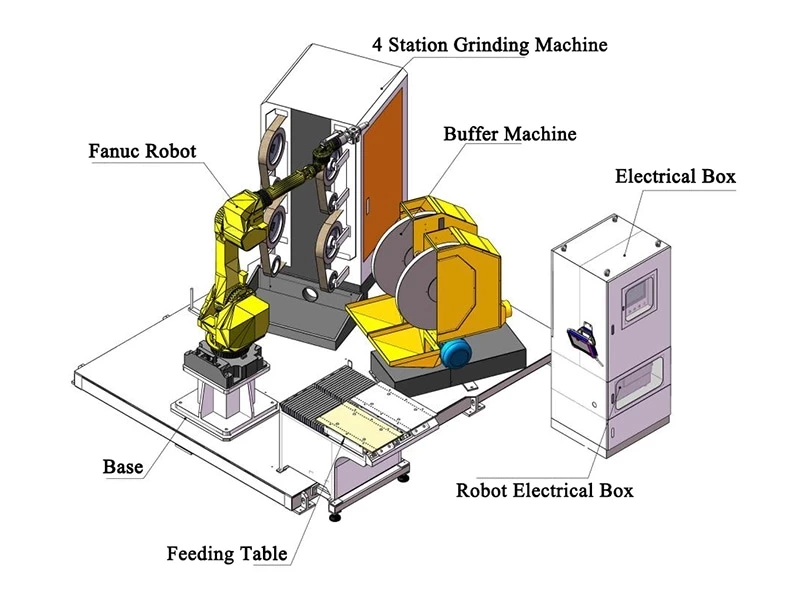
Robot Gringing Polishing Unit Complete Project
The complexity of automation projects varies significantly. Some manufacturers implement fully automated production lines with interconnected processes, while others focus on streamlining specific tasks, such as material transport or quality inspections. Regardless of the scale, automation has the potential to transform manufacturing operations, enhancing efficiency, precision, and cost-effectiveness.
Key Benefits of Implementing Automation in Manufacturing
With persistent labor shortages, increasing labor costs, and rising quality expectations, automation is no longer a luxury—it’s a necessity. By shifting workers away from repetitive, hazardous, and low-value tasks, manufacturers can enhance efficiency while improving overall workforce engagement.
Here are seven major benefits of integrating automation into manufacturing operations:
- Increased Productivity: Automated systems operate 24/7 without downtime, significantly boosting production rates and efficiency.
- Enhanced Quality: By reducing human error, automation ensures precision, consistency, and higher product quality.
- Cost Reduction: Automation optimizes material usage, lowers labor expenses, and minimizes waste in manufacturing processes.
- Shorter Lead Times: Streamlined workflows accelerate production, improving order fulfillment and delivery timelines.
- Improved Workplace Safety: Dangerous or physically demanding tasks are automated, reducing workplace injuries and ensuring a safer environment.
- Labor Shortage Mitigation: Automation fills workforce gaps, especially in industries struggling to find skilled labor.
- Higher Employee Retention: By eliminating monotonous tasks, employees can focus on more meaningful, high-value roles, increasing job satisfaction and retention.
Every manufacturer has unique challenges, and automation solutions should be tailored to specific needs. Whether the goal is higher efficiency, cost savings, or improved quality, automation is a strategic investment for long-term competitiveness.
Types of Manufacturing Automation and Key Industry Applications
Manufacturing automation can be categorized into two primary approaches: fixed automation and flexible automation. Each type serves specific operational needs, with distinct advantages for different industries.
Fixed Automation
Fixed automation, or hard automation, is designed for high-volume production where tasks remain consistent over time. These systems execute repetitive operations with minimal variation, making them ideal for mass production industries. For example, an automated ice cream cup-filling machine is a fixed automation system—optimized for a single function and not easily reconfigured.
Flexible Automation
Flexible automation offers adaptability, allowing manufacturers to program machines for multiple tasks. Collaborative robots (cobots) are prime examples of flexible automation, as they can be quickly reprogrammed for different applications. This approach is beneficial for industries with changing production demands or small-batch manufacturing needs.
Industries Leveraging Industrial Automation
Automation has become a driving force in various industries, enhancing efficiency, quality, and scalability. Some of the most prominent adopters include metal machining, plastics and rubber manufacturing, wire production, pharmaceuticals, consumer goods, and food processing.
Metal Product Polishing Workstation
Automation in Artificial Joint Polishing
Automation plays a vital role in artificial joint polishing, where precision and consistency are crucial. Robotic systems automate tasks such as grinding, buffing, and surface finishing, ensuring uniform quality and reducing defects. Leading manufacturers, like Kingstone Robotec, are advancing robotic solutions for joint polishing, enhancing efficiency, minimizing human error, and maintaining strict industry standards.
Artificial Joint Polishing Unit
Automation in Automotive Manufacturing
The automotive industry has long been a leader in automation. Robotics and automated systems handle nearly every stage of vehicle production, from assembly and welding to painting and quality inspection. These technologies improve efficiency, reduce costs, and ensure consistency in manufacturing. Additionally, automated supply chain management has revolutionized logistics, minimizing delays and optimizing inventory control.
As automation continues to evolve, its integration across industries will only deepen, driving innovation and competitiveness in the global manufacturing sector.
Automation in Aerospace and Sport Processing Manufacturing
Automation in Aerospace Manufacturing
The aerospace industry relies on advanced manufacturing automation to enhance precision, safety, and efficiency. Robotic systems assemble large and intricate components such as fuselages, wings, and tail sections, ensuring consistency in production. Given the industry’s strict quality standards, automated vision inspection systems perform high-accuracy assessments to detect defects and maintain regulatory compliance. The adoption of automation in aerospace manufacturing not only enhances production speed but also minimizes errors in critical components used in commercial and military aircraft.
Automation in Sports Equipment Manufacturing
In the sports equipment industry, automation is key to enhancing product quality, precision, and production efficiency. Robots and automated systems are used for tasks like molding, assembly, and polishing. For example, in golf club manufacturing, robotic polishing systems are utilized to achieve consistent, high-quality finishes on club heads, ensuring optimal performance and aesthetics. Automated processes not only streamline production but also reduce human error, making the process faster and more reliable. Golf clubs gringing robotic systems have revolutionized the way golf clubs are polished, providing golfers with high-performance equipment while cutting down on manufacturing time.
The Role of Robotics in Manufacturing Automation
Industrial robots have become the foundation of modern manufacturing automation, significantly reducing labor costs while improving efficiency. At the core of automation systems are robotic arms, programmable mechanical devices that mimic human arm functions to execute precision-based, repetitive tasks. These robotic systems handle welding, material handling, packaging, and assembly, ensuring speed, accuracy, and reduced operational risks.
To achieve optimal automation, manufacturers must select the right type of robotic system for their production lines. Understanding the capabilities of various robotic arms, including articulated, SCARA, delta, and collaborative robots (cobots), allows businesses to tailor automation strategies to meet their specific production needs.
As automation continues to advance, robotics will remain central to transforming manufacturing across industries, driving greater efficiency, scalability, and competitiveness in global markets.
Collaborative Robots (Cobots) in Modern Manufacturing Automation
Collaborative robots, commonly referred to as cobots, are increasingly becoming a cornerstone in flexible automation across various industries. These robots are specifically designed to work alongside human operators, enhancing efficiency while ensuring safety. Cobots are equipped with advanced sensors and safety features that enable close collaboration with humans without the need for safety enclosures. Unlike traditional industrial robots, cobots are cost-effective, easily programmable, and adaptable to a range of tasks, making them particularly suited for small and medium-sized manufacturers (SMMs) who need to quickly respond to shifting production needs. Cobots have found widespread applications in manufacturing, logistics, healthcare, food and beverage, and more, owing to their versatility and user-friendly integration into diverse work environments.
Industrial Robots in Large-Scale Manufacturing
Industrial robots, though similar to cobots in some respects, are optimized for high-volume, high-precision tasks in large-scale production settings. These robots are ideal for handling heavier payloads and are designed for tasks such as welding, painting, and assembly in industries like automotive manufacturing. Industrial robots excel in speed and precision, which is why they are typically used in fixed automation settings where their tasks do not require significant flexibility. However, their operation demands a controlled environment with safety enclosures, as they cannot safely interact with humans without the proper protections. Additionally, while they deliver outstanding consistency, programming and reprogramming industrial robots can be time-consuming and complex, requiring specialized knowledge and training.
Getting Started with Manufacturing Automation
As manufacturing automation becomes more accessible, small and medium-sized manufacturers (SMMs) are increasingly looking to incorporate robotic systems into their production lines. However, the transition to automated solutions can be daunting. To facilitate a smooth introduction to automation, manufacturers must take careful steps to ensure their automation projects are successful and aligned with their business goals.
Related Reading:The Ultimate Guide to Industrial Automation for Small and Medium Manufacturers (SMMs)
Key Steps to Kickstart Your Industrial Automation Journey
To guide manufacturers through the complexities of automation, industry experts emphasize several key strategies. First, defining clear objectives and setting realistic goals for the automation project is critical. Identifying a "technical champion" within the organization—someone with the expertise to lead the initiative—can also help ensure the project stays on track. It’s advisable to begin with low-risk, high-reward projects that can deliver quick returns, thus building confidence in the automation process. Gaining support from top management is another vital aspect of successful implementation, ensuring that resources and strategic direction are aligned. By following these steps, manufacturers can lay the foundation for a successful and profitable automation journey that enhances both efficiency and competitiveness.
Choosing the First Manufacturing Process to Automate
When embarking on the journey to integrate automation into manufacturing, one of the most critical decisions a manufacturer faces is selecting which process to automate first. With various processes across the production floor all vying for the productivity and efficiency benefits that automation offers, choosing the right one is key to the success of the initiative. A thoughtful, strategic approach is required to identify the most suitable process for automation. This guide provides essential factors to consider when making this decision, ensuring the first automation project aligns with overall business goals and offers the greatest potential for immediate improvement.
Building an Advanced Manufacturing Team (AMT)
An Advanced Manufacturing Team (AMT) is an internal unit tasked with driving automation initiatives across manufacturing facilities. While external system integrators will remain essential for projects requiring specialized expertise, AMTs are ideally suited for managing entry-level to intermediate automation tasks. With agility and budget-conscious approaches, AMTs can drive significant improvements without the complexity of large-scale automation projects. This guide discusses the five key advantages of forming an AMT, from accelerating project timelines to empowering in-house teams with valuable automation skills.
Structuring an Advanced Manufacturing Team for Automation
Successfully structuring an AMT involves key considerations to ensure its effectiveness in driving robotics and industrial automation. Some best practices for structuring an AMT include assembling a cross-functional team, developing a solid project management framework, and prioritizing investment in simulation and testing. These foundational strategies not only streamline the automation process but also enhance team collaboration and skills development. This article offers comprehensive recommendations on how to organize and structure an AMT to ensure optimal performance in the pursuit of manufacturing automation.
Calculating Return on Investment (ROI) for Automation Projects
Understanding the financial implications of robotics and automation projects is essential for securing approval and demonstrating long-term value. While calculating ROI for automation can be complex due to multiple influencing factors, it remains a vital step in ensuring the feasibility of a project. This guide provides insights into the key components necessary for accurately calculating ROI, alongside instructions for utilizing advanced ROI calculation tools, designed to simplify and clarify the process.
Related Reading: The Guide to caculate Return on Investment (ROI) For Automation Projects in Polishing
AI in Manufacturing Automation
Artificial intelligence (AI) has become a transformative force in manufacturing automation, rapidly evolving over the past decade. AI has been widely utilized in manufacturing environments to analyze data from production and supply chains, optimize processes, and facilitate quality control and maintenance. Recently, advances in AI, particularly generative AI, have further expanded its potential, leading to new opportunities in automation. These advancements can be categorized into three major trends:
- Programming Co-Pilot: Generative AI models like ChatGPT are being used to enable natural language commands in programming. This allows users to give prompt-based coding instructions, enhancing communication and efficiency on the factory floor. With AI as a co-pilot, programming becomes more intuitive and less reliant on specialized knowledge.
- Real-time Adaptive Path Programming: AI is enhancing the adaptability of robotic systems by enabling real-time, autonomous programming. With the help of machine vision and mission-based programming, robots can adapt their actions dynamically with minimal human intervention, achieving maximum accuracy and flexibility in task execution.
- Synthetic Training of Robot Cells: AI is being used to create virtual environments for the training and debugging of robots. These synthetic environments, or digital twins, allow manufacturers to simulate various scenarios, detect issues early, and innovate more quickly. By replicating real-world conditions in a virtual space, manufacturers can improve accuracy and reduce errors during deployment.
A key partnership has accelerated the development of innovative technologies, aiming to create accurate digital twins faster than ever. This collaboration focuses on generative designs for robotic systems, AI-driven programming assistance, and autonomous robotics, providing manufacturers with the ability to test and refine their projects before making significant physical investments.
Risks and Mitigation in Manufacturing Automation
While manufacturing automation offers significant advantages, it also involves risks that manufacturers must understand and manage. These risks can be broadly categorized into two types: technology risk and process risk.
- Technology Risk: This refers to the challenge of successfully integrating the various components of an automation system to achieve the desired performance. Often, manufacturers invest in building and testing robot cells, only to find that they do not work as expected, resulting in financial and operational losses. To mitigate this risk, some automation providers now offer "out-of-the-box" solutions. These pre-designed, pre-configured systems are ready for immediate use, minimizing setup time and ensuring reliability, ultimately reducing the risk of failure and simplifying maintenance.
- Process Risk: Process risk involves the challenge of ensuring that automation systems perform consistently despite variations in inputs. Traditional technologies have struggled to handle large process variations, and small and medium-sized manufacturers (SMMs) have faced difficulty validating systems before committing to capital expenditures (CAPEX). However, recent developments in cloud robotics and AI have helped mitigate process risk. The use of accurate digital twins and virtual machine designs allows manufacturers to test and optimize their automation projects in a virtual environment before making CAPEX investments. This approach reduces uncertainty and increases the likelihood of successful implementation.
The Future of Manufacturing Automation
The future of the manufacturing automation industry is filled with growth and opportunity. According to a survey by Persistence Market Research, the global demand for industrial automation is expected to grow at a rate of 9.3% per year, reaching USD 307.7 billion by 2030, up from USD 165.1 billion in 2023. This growth reflects the increasing reliance on automation technologies to drive efficiencies and competitiveness in the manufacturing sector.
Emerging trends such as the productization and platforming of automation systems, along with the integration of AI and machine learning, are reshaping manufacturing processes. These advancements are making manufacturing smarter, more interconnected, and more accessible to a broader range of manufacturers. Robotics, in particular, are playing a key role in enhancing productivity while promoting safer, more flexible work environments.
As automation technologies continue to evolve and become more adaptable, manufacturers across various industries are positioned to harness these innovations, achieving unparalleled levels of efficiency, scalability, and competitiveness in the global market.
Customized Intelligent Fully Automated Workstation Assembly Line, Composed of Multiple Fully Automated Workstations.
References:
- Robotics Industry Association. (n.d.). The state of robotics in manufacturing. Robotics Industry Association. Retrieved from https://www.robotics.org
- Manufacturing Automation Journal. (n.d.). Collaborative robots: Transforming manufacturing. Manufacturing Automation Journal. Retrieved from https://www.automationmag.com

